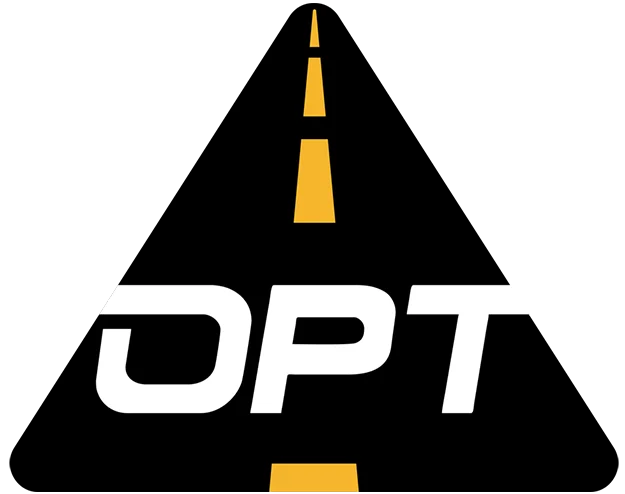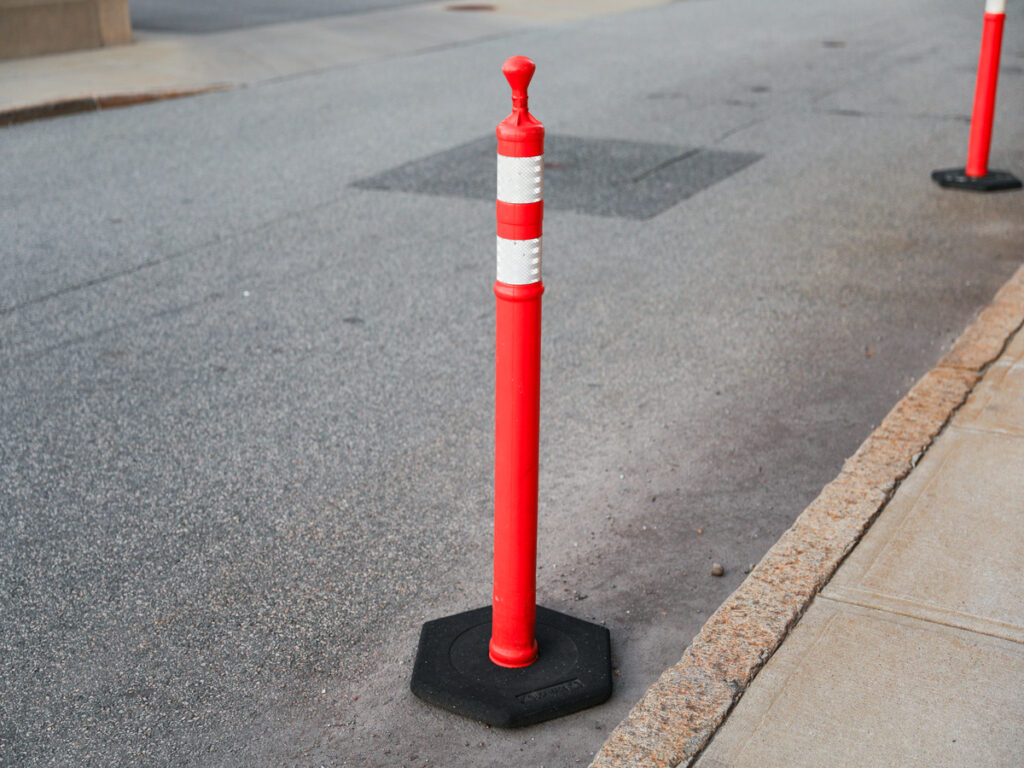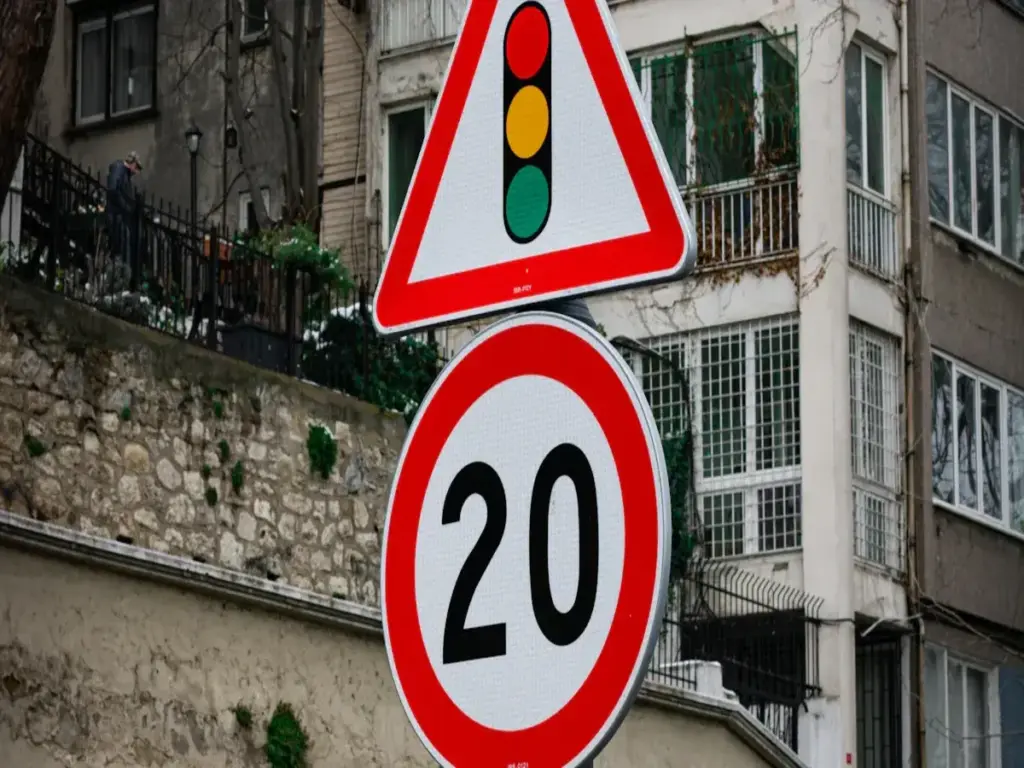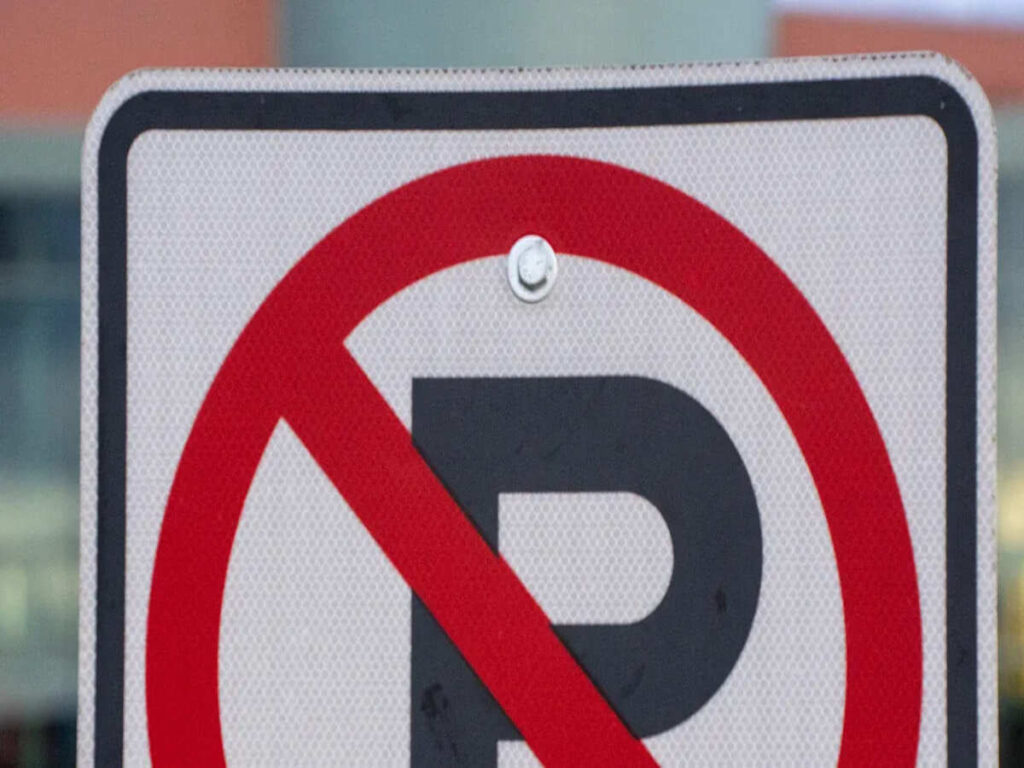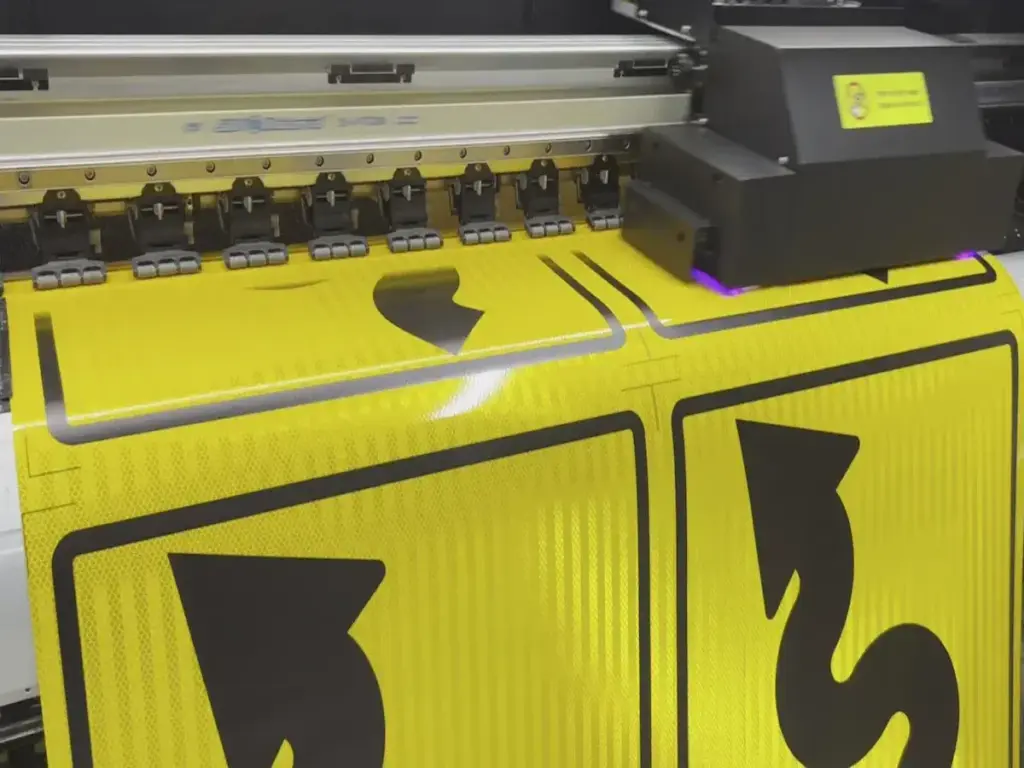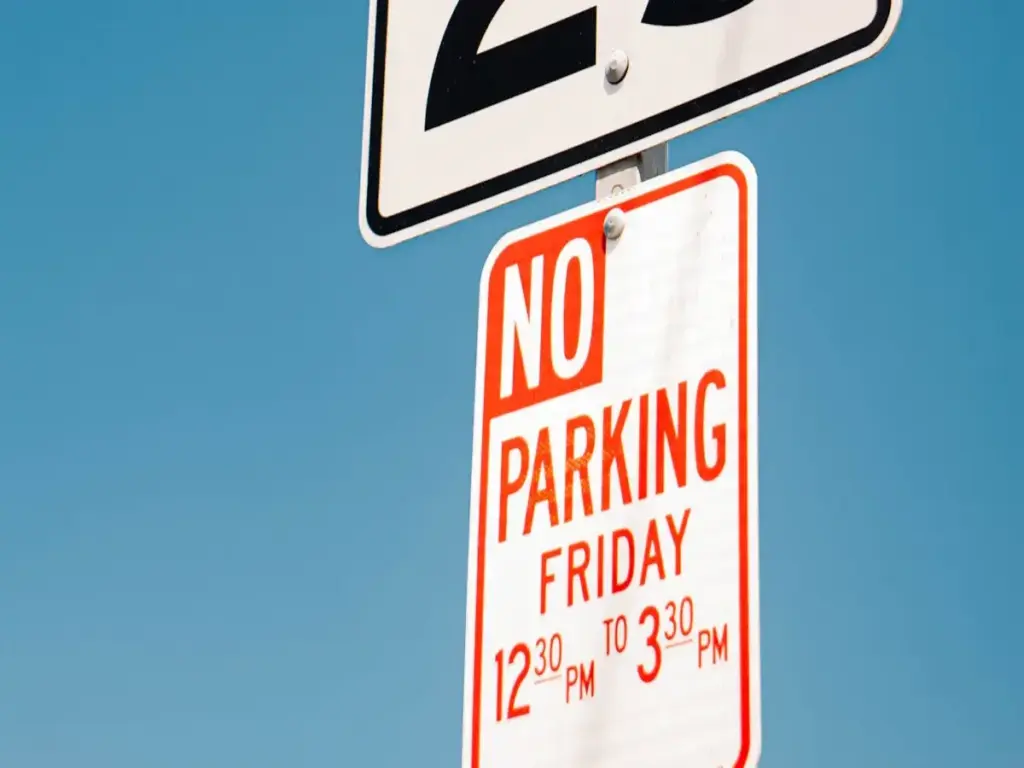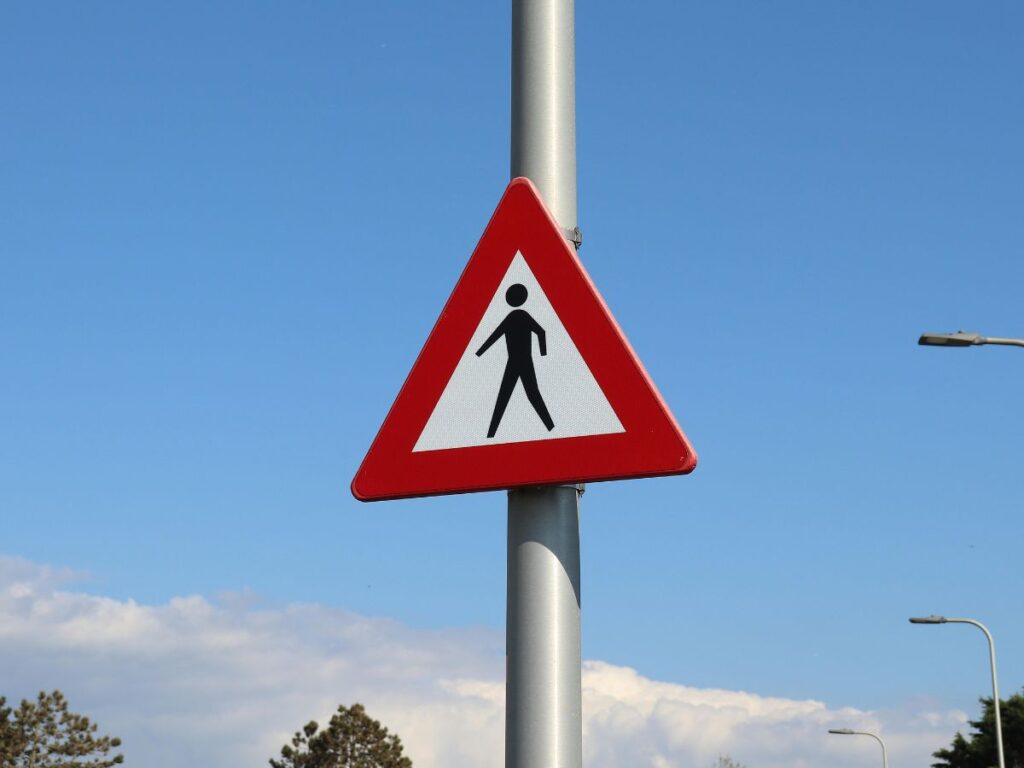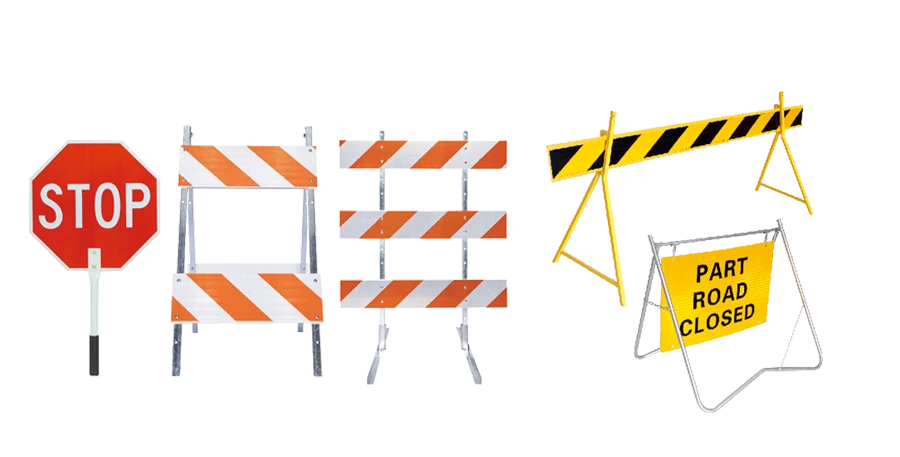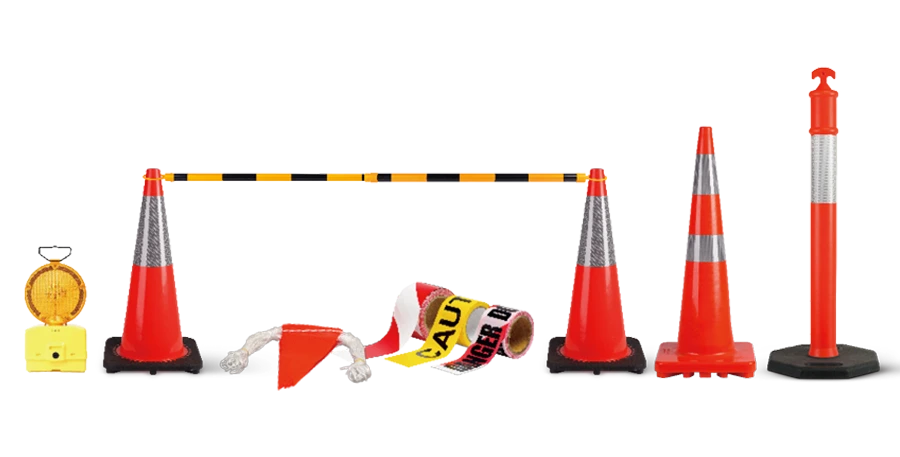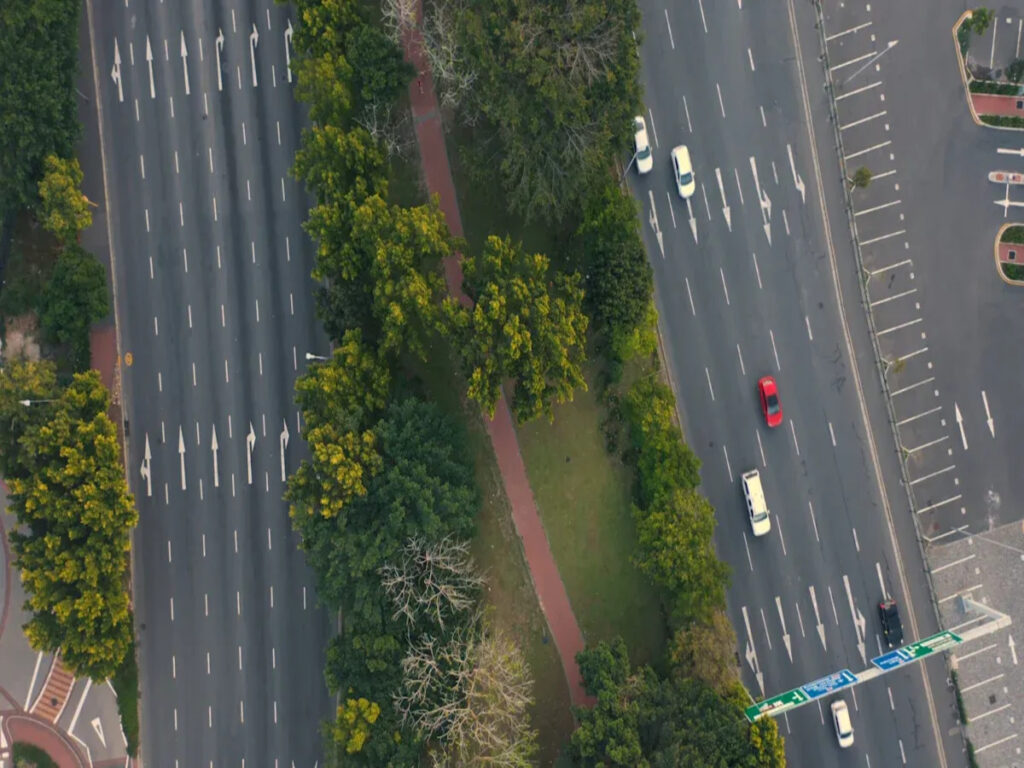
राजमार्ग कार्य क्षेत्र अक्सर ड्राइवरों और श्रमिकों के लिए महत्वपूर्ण जोखिम पैदा करते हैं. ट्रैफिक कंट्रोल डेलिनेटर्स इन खतरों को कम करने में महत्वपूर्ण भूमिका निभाते हैं. वे स्पष्ट दृश्य संकेत प्रदान करते हैं जो लेन अनुशासन में सुधार करते हैं और भ्रम को कम करते हैं, विशेष रूप से जटिल सड़क लेआउट में. अच्छी तरह से नियोजित लेआउट ट्रैफ़िक को कुशलता से निर्देशित करके और सिर पर टकराव के जोखिम को कम करके सुरक्षा को बढ़ाते हैं. उदाहरण के लिए, 11% दुर्घटनाओं में कार्य क्षेत्रों में उचित यातायात नियंत्रण की कमी होती है, जबकि 34% जटिल संरेखण पर होता है. लेन को परिभाषित करके और दृश्यता में सुधार करके, डेलिनेटर्स चिकनी नेविगेशन और कम दुर्घटनाओं को सुनिश्चित करते हैं.
ओपीटीसंकेत कार्य क्षेत्रों में इन सुरक्षा उपायों के महत्वपूर्ण महत्व को समझें. ओप्ट्सिग्न्स रेंज यातायात नियंत्रण उच्चतम सुरक्षा मानकों को पूरा करने के लिए डिज़ाइन किया गया है, टिकाऊ प्रदान करना, दृश्यमान, और किसी भी राजमार्ग परियोजना के लिए विश्वसनीय समाधान. चाहे आपको उच्च-ट्रैफ़िक क्षेत्रों के लिए लचीले डेलिनेटर्स की आवश्यकता हो या टिकाऊ, रात की दृश्यता के लिए चिंतनशील मॉडल, Optsigns बिक्री के लिए ट्रैफ़िक डेलिनेटर्स प्रदान करता है जो सबसे कठिन परिस्थितियों का सामना कर सकता है. Optsigns का चयन करके, आप केवल उच्च-गुणवत्ता वाले ट्रैफ़िक नियंत्रण उपकरणों में निवेश नहीं कर रहे हैं-आप दुर्घटनाओं को कम करने और दोनों श्रमिकों और ड्राइवरों की रक्षा करने में मदद करते हुए अपनी रोडवर्क परियोजनाओं की सुरक्षा और दक्षता सुनिश्चित कर रहे हैं.
क्यों ट्रैफिक कंट्रोल डेलिनेटर्स सुरक्षा के लिए महत्वपूर्ण हैं
निर्माण क्षेत्रों में यातायात प्रवाह का प्रबंधन
निर्माण क्षेत्र अक्सर सामान्य यातायात पैटर्न को बाधित करते हैं, भ्रम पैदा करना और दुर्घटनाओं का खतरा बढ़ाना. आपने देखा होगा कि ये क्षेत्र उचित मार्गदर्शन के बिना कैसे अराजक बन सकते हैं. ट्रैफिक कंट्रोल डेलिनेटर्स ऑर्डर बनाए रखने में महत्वपूर्ण भूमिका निभाते हैं. वे कार्य क्षेत्रों और सक्रिय लेन के बीच स्पष्ट सीमाएं बनाते हैं, यह सुनिश्चित करना कि वाहन सही रास्ते पर रहें. यह पृथक्करण न केवल श्रमिकों की रक्षा करता है, बल्कि ड्राइवरों को ज़ोन के माध्यम से सुरक्षित रूप से नेविगेट करने में मदद करता है.
में 2021, ऊपर 105,000 अमेरिका भर में कार्य क्षेत्रों में दुर्घटनाएँ हुईं, से अधिक के लिए अग्रणी 42,000 चोटें और 954 घातक परिणाम. ये खतरनाक संख्याएं प्रभावी यातायात प्रबंधन के महत्व को उजागर करती हैं. डेलिनेटर्स निर्माण स्थलों के आसपास वाहनों का मार्गदर्शन करते हैं, भ्रम को कम करना और चिकनी यातायात प्रवाह सुनिश्चित करना. उनका हल्का डिज़ाइन त्वरित स्थापना के लिए अनुमति देता है, उन्हें अस्थायी सेटअप के लिए आदर्श बनाना. इन उपकरणों का उपयोग करके, आप निर्माण क्षेत्रों में सुरक्षा में काफी सुधार कर सकते हैं.
रणनीतिक डेलिनेटर प्लेसमेंट के साथ दुर्घटनाओं को रोकना
ट्रैफिक कंट्रोल डेलिनेटर्स का रणनीतिक प्लेसमेंट दुर्घटनाओं की संभावना को काफी कम कर सकता है. जब आप ट्रैफ़िक कंट्रोल डेलिनेटर्स को सही ढंग से स्थिति में रखते हैं, वे स्पष्ट डिवाइडर के रूप में कार्य करते हैं, विशेष रूप से उन क्षेत्रों में जहां सड़क के निशान दिखाई नहीं देते हैं. यह सुनिश्चित करता है कि ड्राइवर अपने निर्दिष्ट लेन के भीतर रहें, यहां तक कि खराब प्रकाश या खराब मौसम जैसी चुनौतीपूर्ण परिस्थितियों में.
बिक्री के लिए डेलिनेटर्स भी टकराव के दौरान प्रभावों को अवशोषित करते हैं, क्षति और चोटों को कम करना. उदाहरण के लिए, लचीला ट्रैफ़िक नियंत्रण डेलिनेटर्स प्रभाव पर झुक सकते हैं, एक दुर्घटना के बल को कम करना. वाहनों को सुरक्षित रूप से काम क्षेत्रों के आसपास रूट करके, ये उपकरण ड्राइवरों और श्रमिकों दोनों की रक्षा करते हैं. स्पष्ट सीमाएं और उचित प्लेसमेंट सामान्य मुद्दों को रोकने में मदद करते हैं रियर-एंड टकराव और लेन-क्रॉसिंग दुर्घटनाएँ. सही रणनीति के साथ, आप सड़क पर सभी के लिए एक सुरक्षित वातावरण बना सकते हैं.
7 ट्रैफिक कंट्रोल डेलिनेटर लेआउट हाइवे वर्क ज़ोन क्रैश को कम करने के लिए

चक्कर मार्गों के लिए संकेंद्रित सर्कल
CONSENTRIC सर्कल बड़े चक्कर मार्गों या परिपत्र पुन: रूटिंग परिदृश्यों में यातायात के प्रबंधन के लिए एक प्रभावी समाधान प्रदान करते हैं. यह लेआउट कई परिपत्र पथ बनाने के लिए डेलिनेटर्स का उपयोग करता है, निर्माण क्षेत्रों के आसपास आसानी से ड्राइवरों का मार्गदर्शन करें. स्पष्ट रूप से चक्कर को चिह्नित करके, आप भ्रम को कम करने में मदद करते हैं और यह सुनिश्चित करते हैं कि वाहन इच्छित मार्ग का अनुसरण करें. यह सेटअप टकराव के जोखिम को कम करता है, विशेष रूप से उच्च यातायात मात्रा वाले क्षेत्रों में. अध्ययनों से पता चलता है कि गाढ़ा हलकों का उपयोग करके राजमार्ग कार्य क्षेत्र दुर्घटनाओं को कम कर सकता है 40%. यह सुधार न केवल सुरक्षा को बढ़ाता है, बल्कि जटिल चक्कर स्थितियों में घातक चोट दुर्घटनाओं को भी रोकता है.
बहु-लेन निर्माण क्षेत्रों के लिए डबल लेन डिवाइडर
डबल लेन डिवाइडर शहरी रोडवर्क या राजमार्ग निर्माण परियोजनाओं के लिए आदर्श हैं, जिसमें कई लेन शामिल हैं. ये डेलिनेटर्स सक्रिय ट्रैफ़िक लेन और निर्माण क्षेत्रों के बीच एक स्पष्ट पृथक्करण बनाते हैं. वाहनों को उनके निर्दिष्ट लेन में रखकर, आप लेन-क्रॉसिंग दुर्घटनाओं की संभावना को काफी कम कर सकते हैं. यह लेआउट उच्च घनत्व वाले ट्रैफ़िक क्षेत्रों में विशेष रूप से उपयोगी है जहां ऑर्डर बनाए रखना महत्वपूर्ण है. अनुसंधान इंगित करता है कि डबल लेन डिवाइडर लेन-क्रॉसिंग क्रैश को कम कर सकते हैं 30%, उन्हें व्यस्त कार्य क्षेत्रों में ट्रैफ़िक नियंत्रण में सुधार के लिए एक महत्वपूर्ण उपकरण बनाना.
अस्थायी लेन शिफ्ट के लिए ऑफसेट डेलिनेटर्स के साथ ज़ोनिंग
ऑफसेट डेलिनेटर्स अल्पकालिक निर्माण के दौरान अस्थायी लेन शिफ्ट या प्रतिबंधित क्षेत्रों के लिए अच्छी तरह से काम करते हैं. ये डेलिनेटर्स संकीर्ण या परिवर्तित लेन के माध्यम से ड्राइवरों का मार्गदर्शन करते हैं, चिकनी यातायात प्रवाह सुनिश्चित करना. स्पष्ट रूप से स्थानांतरित लेन को चिह्नित करके, आप रियर-एंड टकराव की संभावना को कम करते हैं, जो ऐसे परिदृश्यों में आम हैं. इस लेआउट को रियर-एंड चोट दुर्घटनाओं को कम करने के लिए दिखाया गया है 25%. यह हाईवे वर्क ज़ोन में ड्राइवरों और श्रमिकों दोनों के लिए सुरक्षा बनाए रखने में भी मदद करता है, दुर्घटनाओं को कम करने के लिए एक आवश्यक रणनीति बनाना.
उच्च गति वाली सड़क निर्माण के लिए विस्तारित अवरोधक रेखाएँ
विस्तारित बाधा लाइनें उच्च गति वाले क्षेत्रों में यातायात के प्रबंधन के लिए एक प्रभावी समाधान प्रदान करती हैं. ये ट्रैफ़िक कंट्रोल डेलिनेटर्स एक सतत विज़ुअल गाइड बनाते हैं, ड्राइवरों को अपनी गलियों को बनाए रखने और अचानक लेन में बदलाव से बचने में मदद मिलती है. यह लेआउट राजमार्गों पर विशेष रूप से उपयोगी है जहां वाहन उच्च गति से यात्रा करते हैं, जैसा कि यह भ्रम को कम करता है और चिकनी यातायात प्रवाह सुनिश्चित करता है.
विस्तारित बाधा लाइनों का उपयोग करके, आप उच्च गति टकराव के जोखिम को काफी कम कर सकते हैं. ये डेलिनेटर्स एक भौतिक और दृश्य बाधा के रूप में कार्य करते हैं, वाहनों को प्रतिबंधित क्षेत्रों या कार्य क्षेत्रों में घुसने से रोकना. अध्ययनों से पता चलता है कि यह लेआउट कम हो जाता है उच्च गति की चोट दुर्घटना द्वारा 20%, यह राजमार्ग कार्य क्षेत्रों में सुरक्षा में सुधार के लिए एक महत्वपूर्ण उपकरण है. इसके अतिरिक्त, इन बाधाओं द्वारा प्रदान किया गया स्पष्ट पृथक्करण दृश्यता को बढ़ाता है, यहां तक कि बारिश या कोहरे जैसी चुनौतीपूर्ण परिस्थितियों में.
यातायात के विलय के लिए पतला डेलिनेटर सेटअप
जब कई गलियां एक में विलय हो जाती हैं, यातायात अक्सर अराजक हो जाता है. एक पतला डेलिनेटर सेटअप इस समस्या का एक व्यावहारिक समाधान प्रदान करता है. यह लेआउट धीरे -धीरे वाहनों को एक एकल लेन में मार्गदर्शन करने के लिए डेलिनेटर्स का उपयोग करता है, भ्रम को कम करना और एक चिकनी विलय प्रक्रिया सुनिश्चित करना. ड्राइवर आसानी से पतले रास्ते का अनुसरण कर सकते हैं, जो अचानक लेन परिवर्तन को कम करता है और समग्र यातायात प्रवाह में सुधार करता है.
यह सेटअप रोकथाम में विशेष रूप से प्रभावी है साइड-स्वाइप टकराव, जो विलय परिदृश्यों में आम हैं. अनुसंधान इंगित करता है कि टेपर्ड डेलीनेटर सेटअप इन घटनाओं को कम कर देता है 35%. इस लेआउट को लागू करके, आप राजमार्ग कार्य क्षेत्रों में ड्राइवरों और श्रमिकों दोनों के लिए एक सुरक्षित वातावरण बना सकते हैं. धीरे-धीरे कमी करने से ड्राइवरों को तनाव कम करने में भी मदद मिलती है, विलय प्रक्रिया को अधिक पूर्वानुमानित और नियंत्रित बनाना.
कार्य क्षेत्र परिधि के लिए केंद्रीकृत डेलीनेटर कॉन्फ़िगरेशन
कार्य क्षेत्र की सीमाओं को स्पष्ट रूप से चिह्नित करने के लिए एक केंद्रीकृत डेलीनेटर कॉन्फ़िगरेशन आवश्यक है. यह लेआउट एक परिभाषित परिधि बनाने के लिए डेलीनेटर्स का उपयोग करता है, यह सुनिश्चित करना कि ड्राइवर अपने निर्दिष्ट लेन के भीतर रहें और प्रतिबंधित क्षेत्रों में प्रवेश करने से बचें. स्पष्ट लेन अलगाव प्रदान करके, यह कॉन्फ़िगरेशन भ्रम को कम करता है और दुर्घटनाओं को रोकता है.
यह लेआउट कई लाभ प्रदान करता है:
- यह कम-प्रकाश स्थितियों में दृश्यता को बढ़ाता है, जटिल सड़क लेआउट के माध्यम से सुरक्षित रूप से मार्गदर्शन करने वाले ड्राइवर.
- यह एक दृश्य बाधा के रूप में कार्य करके सिर पर टकराव के जोखिम को कम करता है, ड्राइवरों को अपनी गलियों में रहने में मदद करना.
- यह कार्य क्षेत्र घुसपैठ को कम करता है, श्रमिकों को शामिल करने वाले घातक दुर्घटनाओं की संभावना को कम करना.
इस कॉन्फ़िगरेशन को अपनाकर, आप महत्वपूर्ण यातायात नियंत्रण सुधार प्राप्त कर सकते हैं. अध्ययनों से पता चलता है कि केंद्रीकृत डेलिनेटर सेटअप द्वारा कार्य क्षेत्र घुसपैठ को कम करते हैं 15%, उन्हें राजमार्ग कार्य क्षेत्रों के लिए किसी भी सुरक्षा योजना का एक महत्वपूर्ण घटक बनाना.
हाइब्रिड लेआउट पर चिंतनशील और उच्च-दृश्यता वाले डेलिनेटर्स का संयोजन
रात के समय सड़क निर्माण पर या खराब प्रकाश वाले क्षेत्रों में काम करते समय, आपको एक लेआउट की आवश्यकता है जो दृश्यता को प्राथमिकता देता है. एक हाइब्रिड लेआउट पर चिंतनशील और उच्च-दृश्यता वाले डेलिनेटर्स का संयोजन एक प्रभावी समाधान प्रदान करता है. यह सेटअप दिन के दौरान बाहर खड़े होने के लिए वाहन हेडलाइट्स और उच्च-दृश्यता रंगों को पकड़ने के लिए चिंतनशील सामग्री का उपयोग करता है. एक साथ, ये विशेषताएं सुनिश्चित करती हैं कि ड्राइवर स्पष्ट रूप से डेलिनेटर्स देख सकते हैं, समय या मौसम की स्थिति की परवाह किए बिना.
यह लेआउट उन स्थितियों में सबसे अच्छा काम करता है जहां दृश्यता एक चुनौती है, जैसे कि धूमिल राजमार्ग या ग्रामीण सड़कों को खराब कर दिया. चिंतनशील डेलिनेटर्स का उपयोग करके, आप एक दृश्य गाइड प्रदान करते हैं जो ड्राइवरों को उनकी लेन में रहने में मदद करता है. उच्च-दृश्यता वाले परिसीमनक, वहीं दूसरी ओर, दिन की स्पष्टता बढ़ाएं, 24-घंटे के निर्माण क्षेत्रों के लिए लेआउट बहुमुखी बनाना.
बख्शीश: एक सतत दृश्य पथ बनाने के लिए नियमित अंतराल पर चिंतनशील डेलिनेटर्स रखें. जोड़ा जोर के लिए लेन मर्ज या तेज घटता जैसे महत्वपूर्ण बिंदुओं पर उच्च-दृश्यता वाले डेलिनेटर्स का उपयोग करें.
अध्ययनों से पता चलता है कि यह हाइब्रिड दृष्टिकोण दृश्यता में सुधार करता है 50%, रात के समय के टकराव को कम करना. ड्राइवर सड़क में बदलाव के लिए तेजी से प्रतिक्रिया कर सकते हैं, जैसे कि लेन शिफ्ट्स या डिटॉर्स, जब उनके पास स्पष्ट दृश्य संकेत हैं. यह लेआउट न केवल ड्राइवरों की रक्षा करता है, बल्कि निर्माण क्षेत्र में श्रमिकों की सुरक्षा भी सुनिश्चित करता है.
इस हाइब्रिड लेआउट को अपनाकर, आप सड़क पर सभी के लिए एक सुरक्षित वातावरण बना सकते हैं. विभिन्न प्रकाश स्थितियों के अनुकूल होने की इसकी क्षमता इसे जटिल कार्य क्षेत्रों के लिए एक विश्वसनीय विकल्प बनाती है.
सही ट्रैफ़िक डेलिनेटर्स चुनने के लिए प्रमुख विचार
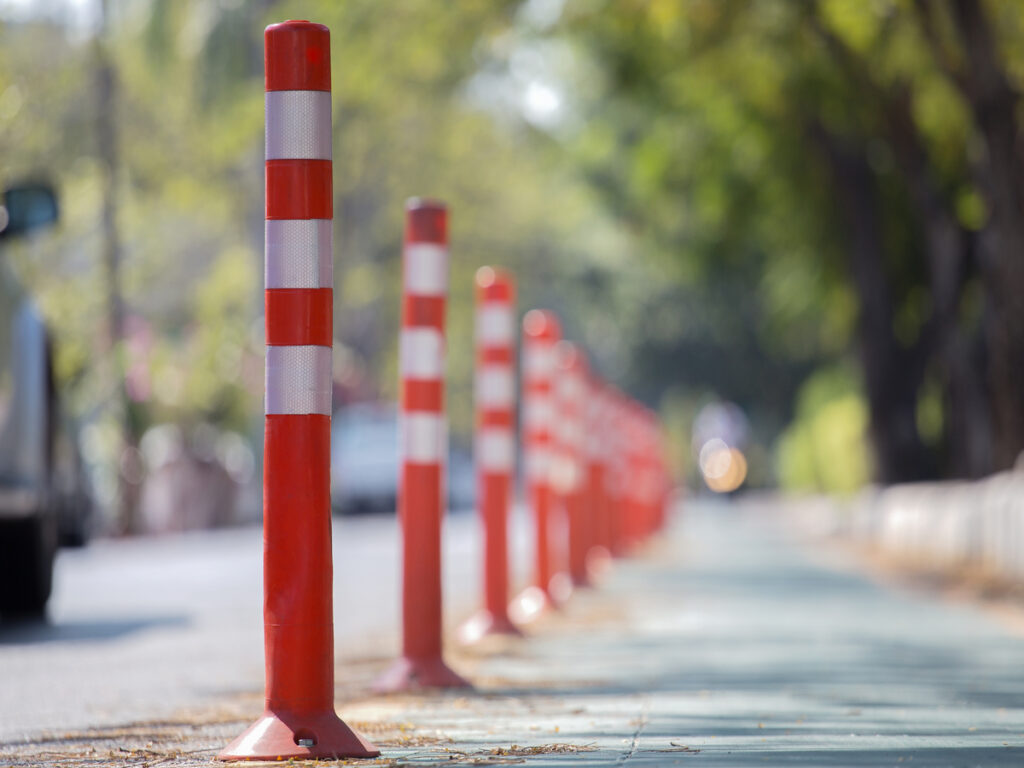
यातायात मात्रा और लेन चौड़ाई
ट्रैफ़िक कंट्रोल डेलिनेटर्स का चयन करते समय, आपको निर्माण क्षेत्र से गुजरने वाले वाहनों की मात्रा पर विचार करना चाहिए. उच्च-ट्रैफ़िक क्षेत्रों को बढ़े हुए पहनने और आंसू को संभालने के लिए टिकाऊ और अत्यधिक दृश्यमान परिसीमनकों की आवश्यकता होती है. उदाहरण के लिए, लचीली सामग्रियों से बने ट्रैफ़िक कंट्रोल डेलिनेटर्स से भारी ट्रैफ़िक लाभ के साथ राजमार्ग जो बार -बार प्रभावों का सामना कर सकते हैं. ये सामग्रियां यह सुनिश्चित करती हैं कि मामूली टकराव के बाद भी डेलिनेटर्स प्रभावी रहें.
लेन की चौड़ाई भी आपके निर्णय में एक महत्वपूर्ण भूमिका निभाती है. संकीर्ण गलियां कॉम्पैक्ट डेलिनेटर्स की मांग करती हैं जो यातायात प्रवाह में बाधा नहीं डालती हैं. व्यापक लेन, वहीं दूसरी ओर, दृश्यता को बढ़ाने वाले बड़े डेलिनेटर्स के लिए अनुमति दें. डेलिनेटर के आकार को लेन की चौड़ाई से मिलान करके, आप ड्राइवरों और श्रमिकों के लिए एक सुरक्षित वातावरण बना सकते हैं. यह दृष्टिकोण सुनिश्चित करता है कि वाहन अपने निर्दिष्ट लेन के भीतर रहें, दुर्घटनाओं के जोखिम को कम करना.
निर्माण अवधि और विशिष्ट सुरक्षा चिंताएँ
आपके निर्माण परियोजना की अवधि प्रभावित करती है डेलिनेटर्स का प्रकार आपको उपयोग करना चाहिए. अल्पकालिक परियोजनाओं के लिए, लाइटवेट और पोर्टेबल डेलिनेटर्स आदर्श हैं. इन्हें जल्दी से स्थापित और हटाया जा सकता है, समय और संसाधन की बचत. दीर्घकालिक परियोजनाएं, तथापि, अधिक टिकाऊ विकल्पों की आवश्यकता है जो मौसम और यातायात की स्थिति के लिए लंबे समय तक संपर्क का सामना कर सकते हैं.
विशिष्ट सुरक्षा चिंताएं भी आपकी पसंद का मार्गदर्शन करती हैं. रोडवेज के साथ रणनीतिक रूप से पोजिशनिंग डेलिनेटर्स ड्राइवरों को लेन अनुशासन बनाए रखने और जटिल ट्रैफ़िक पैटर्न को नेविगेट करने में मदद करता है. उन्हें नियमित अंतराल पर रखने से यह सुनिश्चित होता है कि मोटर चालक आगामी सड़क की स्थिति का अनुमान लगा सकते हैं और तदनुसार उनकी गति को समायोजित कर सकते हैं. दृश्यता एक और महत्वपूर्ण कारक है. उज्ज्वल रंग और चिंतनशील सामग्री डेलिनेटर दृश्यता में सुधार करती है, विशेष रूप से प्रतिकूल मौसम या कम-प्रकाश स्थितियों के दौरान. बढ़ी हुई दृश्यता तेज चालक प्रतिक्रियाओं का संकेत देती है, दुर्घटनाओं की संभावना को कम करना.
इन कारकों को संबोधित करके, आप कार्य क्षेत्र सुरक्षा में सुधार कर सकते हैं और निर्माण क्षेत्रों के माध्यम से चिकनी यातायात प्रवाह सुनिश्चित कर सकते हैं.
केस स्टडी: अनुकूलित डेलिनेटर लेआउट के साथ दुर्घटनाओं को कम करना
एक सफल लेआउट कार्यान्वयन का वास्तविक जीवन उदाहरण
प्रतिदिन गुजरने वाले हजारों वाहनों के साथ एक हलचल वाले राजमार्ग निर्माण क्षेत्र की कल्पना करें. टेक्सास में एक सड़क प्राधिकरण ने एक प्रमुख राजमार्ग विस्तार परियोजना के दौरान इस चुनौती का सामना किया. उन्होंने चिंतनशील और उच्च-दृश्यता मार्करों के संयोजन के साथ एक हाइब्रिड डेलिनेटर लेआउट लागू किया. इस लेआउट ने रात के समय और खराब मौसम की स्थिति के दौरान दृश्यता के मुद्दों को संबोधित किया. टीम ने रणनीतिक रूप से लेन शिफ्ट और विलय बिंदुओं के माध्यम से यातायात का मार्गदर्शन करने के लिए डेलिनेटर्स को रखा.
परिणाम उल्लेखनीय थे. ड्राइवरों ने कार्य क्षेत्र को नेविगेट करने के लिए अधिक आत्मविश्वास महसूस करने की सूचना दी. श्रमिकों ने कम निकट-मिस घटनाओं का अनुभव किया, और यातायात प्रवाह में काफी सुधार हुआ. लेआउट ने भी महत्वपूर्ण बिंदुओं पर भ्रम को कम कर दिया जैसे कि डिटर्स और लेन विलय. दृश्यता और रणनीतिक प्लेसमेंट को प्राथमिकता देकर, इस परियोजना ने शामिल सभी के लिए एक सुरक्षित वातावरण हासिल किया.
आंकड़ा तुलना: वीएस से पहले. अनुकूलन के बाद
इस अनुकूलित लेआउट की सफलता औसत दर्जे के परिणामों में स्पष्ट थी. नीचे दी गई तालिका कार्यान्वयन के बाद देखी गई प्रमुख सुधारों पर प्रकाश डालती है:
| औसत दर्जे का परिणाम | विवरण |
|---|---|
| ज्ञान प्रतिधारण | ड्राइवरों ने लेन शिफ्ट और डिटॉर्स के बारे में बेहतर जागरूकता बनाए रखी. |
| कौशल अधिग्रहण | श्रमिकों को नए ट्रैफ़िक नियंत्रण उपायों के लिए जल्दी से अनुकूलित किया गया. |
| कर्मचारी को काम पर लगाना | सुरक्षित स्थिति के कारण कार्यकर्ता फोकस और तनाव में वृद्धि हुई. |
| निवेश पर प्रतिफल (लागत पर लाभ) | कम दुर्घटना दर में लागत कम हो गई और उच्च परियोजना दक्षता. |
ये परिणाम एक अच्छी तरह से नियोजित डेलिनेटर लेआउट के मूल्य को प्रदर्शित करते हैं. दृश्यता और यातायात मार्गदर्शन में सुधार करके, आप सुरक्षित कार्य क्षेत्र और अधिक कुशल संचालन प्राप्त कर सकते हैं. यह केस स्टडी एक शक्तिशाली उदाहरण के रूप में कार्य करता है कि रणनीतिक योजना निर्माण क्षेत्र सुरक्षा को कैसे बदल सकती है.
ट्रैफिक डेलिनेटर्स निर्माण क्षेत्रों को सुरक्षित बनाने में महत्वपूर्ण भूमिका निभाते हैं. वे कार्य क्षेत्रों और सक्रिय ट्रैफ़िक लेन के बीच स्पष्ट सीमाएं बनाते हैं, भ्रम को कम करना और वाहनों को सुरक्षित रूप से मार्गदर्शन करना. उनका लचीला डिजाइन प्रभावों को अवशोषित करता है, चोटों और वाहन क्षति को कम करना. आप सभी मौसम की स्थिति में डेलिनेटर्स पर भरोसा कर सकते हैं, सुसंगत प्रदर्शन सुनिश्चित करना.
इन सिद्ध लेआउट को अपनाने से दुर्घटना दर काफी कम हो सकती है. अपने डेलिनेटर सेटअप की सावधानीपूर्वक योजना बनाकर सुरक्षा को प्राथमिकता दें. एक ठेकेदार या सड़क प्राधिकरण के रूप में, आप जीवन की रक्षा और यातायात प्रवाह में सुधार करने की शक्ति रखते हैं. हर निर्माण क्षेत्र को सभी के लिए सुरक्षित बनाने के लिए आज कार्रवाई करें.
अक्सर पूछे जाने वाले प्रश्न
ट्रैफिक कंट्रोल डेलिनेटर्स क्या हैं?
ट्रैफ़िक कंट्रोल डेलिनेटर्स आमतौर पर प्लास्टिक जैसी टिकाऊ सामग्री से बने होते हैं, रबड़, या धातु. ये सामग्री लचीलापन और प्रभाव प्रतिरोध सुनिश्चित करती है. कुछ ट्रैफिक डेलिनेटर्स में भी शामिल हैं चिंतनशील सतह या उच्च-दृश्यता रंग कम-प्रकाश स्थितियों में दृश्यता में सुधार करने के लिए.
कैसे डेलिनेटर्स निर्माण क्षेत्रों में सुरक्षा में सुधार करते हैं?
स्पष्ट सीमा और दृश्य संकेत बनाकर बिक्री गाइड वाहनों के लिए डेलिनेटर्स. वे ड्राइवरों को अपनी गलियों में रहने में मदद करते हैं, भ्रम और दुर्घटनाओं को कम करना. उनका रणनीतिक प्लेसमेंट चिकनी यातायात प्रवाह सुनिश्चित करता है और वाहनों को प्रतिबंधित क्षेत्रों से बाहर रखकर श्रमिकों की रक्षा करता है.
क्या कई परियोजनाओं के लिए डेलिनेटर्स का पुन: उपयोग किया जा सकता है?
हाँ, कई डेलिनेटर्स पुन: प्रयोज्य हैं. उनके हल्के और टिकाऊ डिजाइन आसान परिवहन और पुनर्स्थापना के लिए अनुमति देते हैं. उचित रखरखाव, जैसे कि सफाई और क्षति के लिए निरीक्षण, सुनिश्चित करता है कि वे भविष्य की परियोजनाओं के लिए प्रभावी बने रहें.
रात के समय के निर्माण के लिए आवश्यक चिंतनशील डेलिनेटर्स हैं?
रात के समय के निर्माण के लिए चिंतनशील डेलिनेटर्स आवश्यक हैं. वे वाहन हेडलाइट्स को प्रतिबिंबित करके दृश्यता को बढ़ाते हैं, ड्राइवरों को सुरक्षित रूप से नेविगेट करने में मदद करना. उनके बिना, ड्राइवर लेन की सीमाओं को देखने के लिए संघर्ष कर सकते हैं, दुर्घटनाओं का खतरा बढ़ रहा है.
मैं अपने प्रोजेक्ट के लिए सही डेलिनेटर लेआउट कैसे चुनूं?
ट्रैफ़िक वॉल्यूम जैसे कारकों पर विचार करें, लिंग चौड़ाई, और परियोजना की अवधि. उच्च-ट्रैफ़िक क्षेत्रों को टिकाऊ डेलिनेटर्स की आवश्यकता होती है, जबकि अल्पकालिक परियोजनाएं पोर्टेबल विकल्पों से लाभान्वित होती हैं. सबसे प्रभावी लेआउट का चयन करने के लिए अपने कार्य क्षेत्र की विशिष्ट सुरक्षा चिंताओं का विश्लेषण करें.
